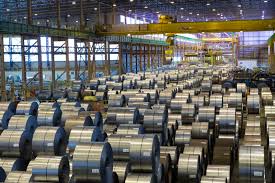
Industrial gases like oxygen, nitrogen and argon are produced and supplied in both gas and liquid form. They are transported in cylinders or as bulk liquid and also through pipelines as gas. In the steely industry, oxygen, nitrogen, hydrogen and argon are used.
Steel industry: The largest consumer of oxygen
Oxygen is a non-metallic element that makes up around 21% of planet Earth’s atmosphere by volume and 23% by weight of the air. The non-metallic element is colorless, odorless and tasteless. It is highly oxidizing and reacts strongly with combustible materials releasing in the process. Numerous reactions require presence of water or need a catalyst. The element has low boiling/ condensing point which is -183 deg C. Cryogenic distillation technique is used for producing oxygen in large quantities at high purity as a gas and liquid. In smaller quantities and lower purity oxygen is produced by pressure swing adsorption (PSA).
Oxygen is the 2nd most consumed industrial gas after nitrogen. In gaseous form, it is referred to as GOX and LOX when produced and delivered as cryogenic liquid. Oxygen is valued for its reactivity which is useful in steel processing, welding and cutting of steel. It is estimated that 50% of all industrially produced oxygen is consumed in the steel industry making it the largest consumer of the gas. Basic oxygen furnace makes heavy use of oxygen for making steel. The non-metallic element is used for enriching air and enhancing combustion temperatures in blast and open hearth furnaces to replace coke with other combustible materials.

It is also used to enrich air and increase combustion temperatures in blast furnaces and open hearth furnaces as well as to replace coke with other combustible materials. In the steel making process, undesirable carbon binds with oxygen to form carbon oxides, which then leave as gases. Oxygen is introduced into the steel bath through a special lance. It is also used for improving efficiency of the electric arc furnaces.
